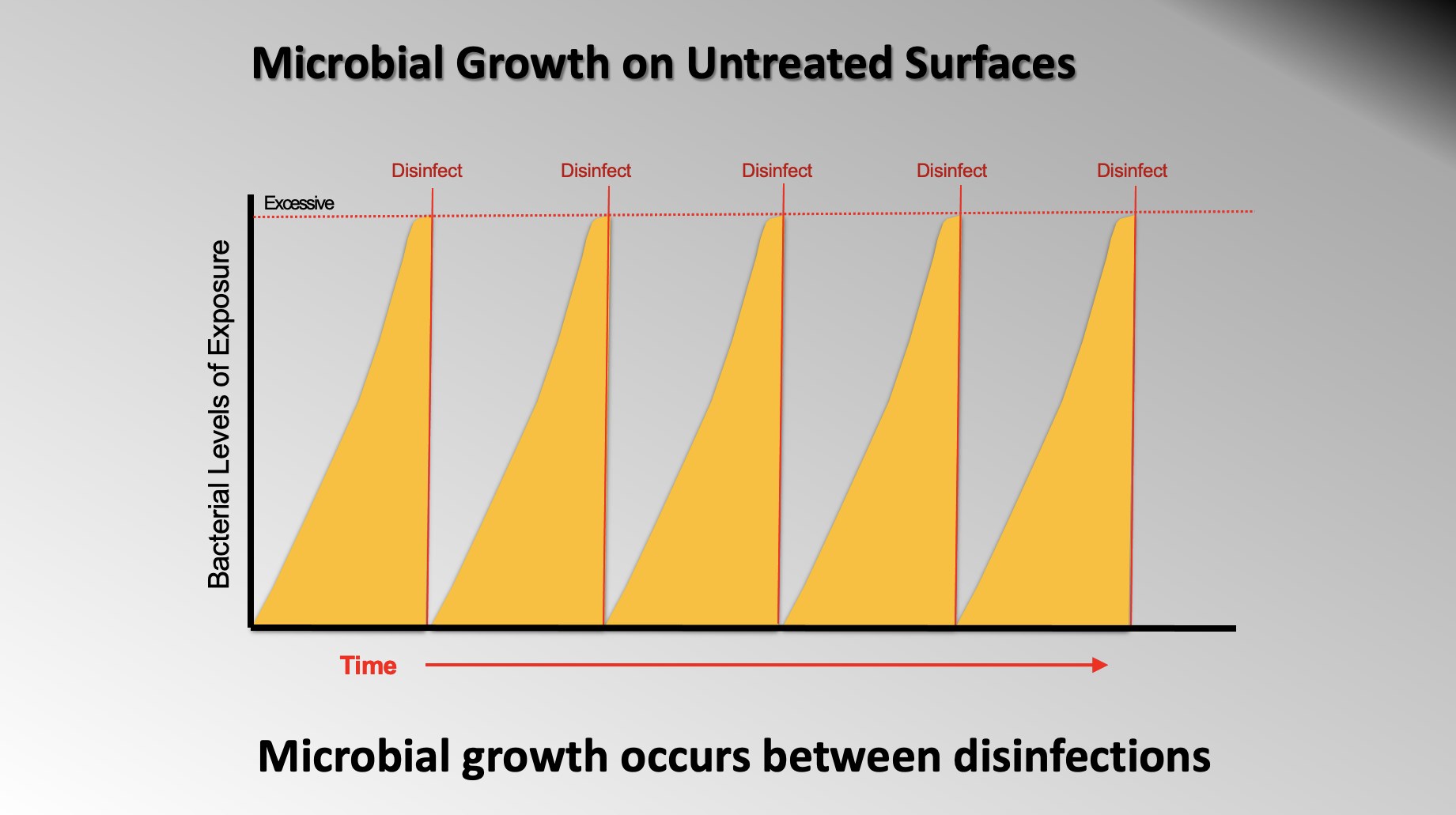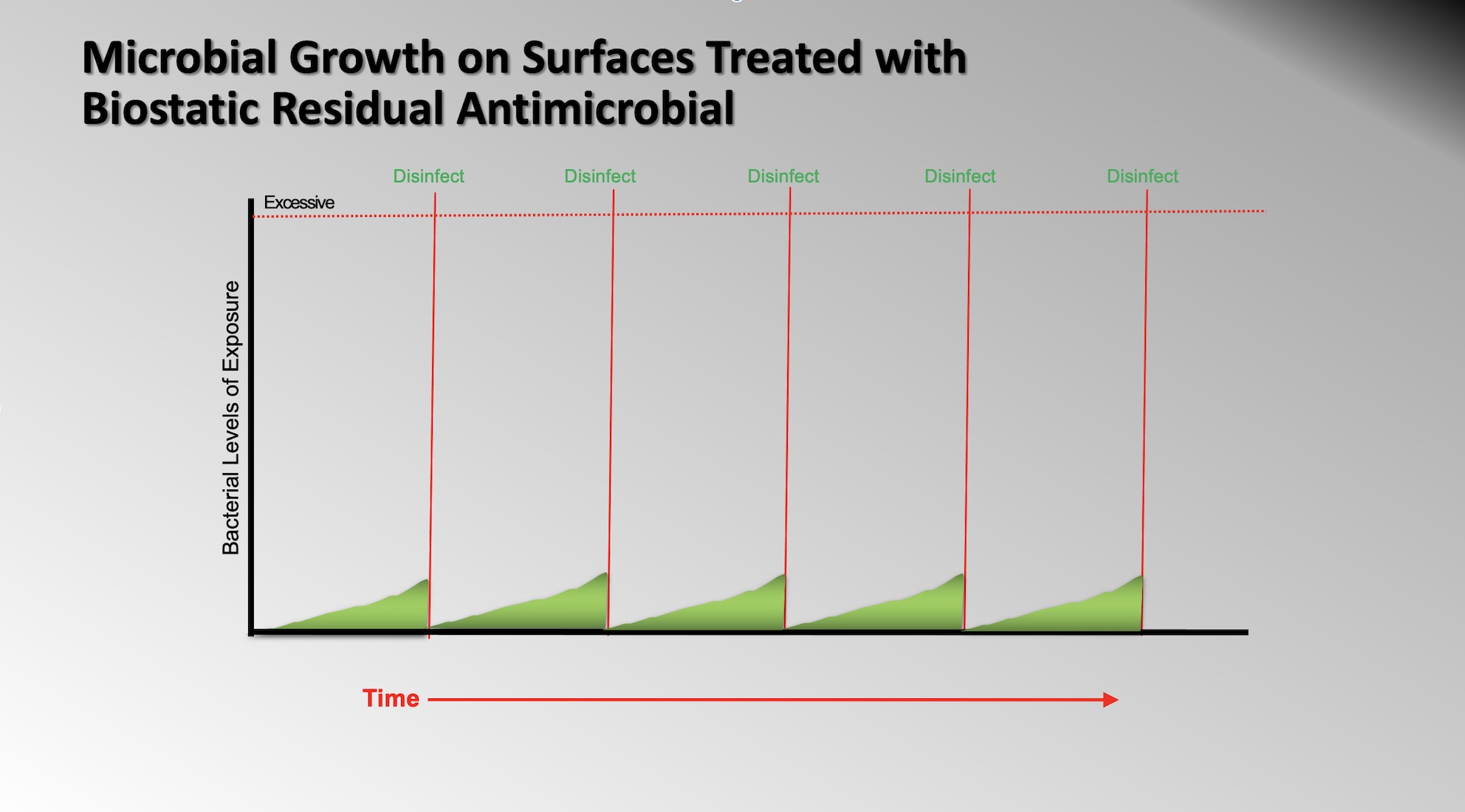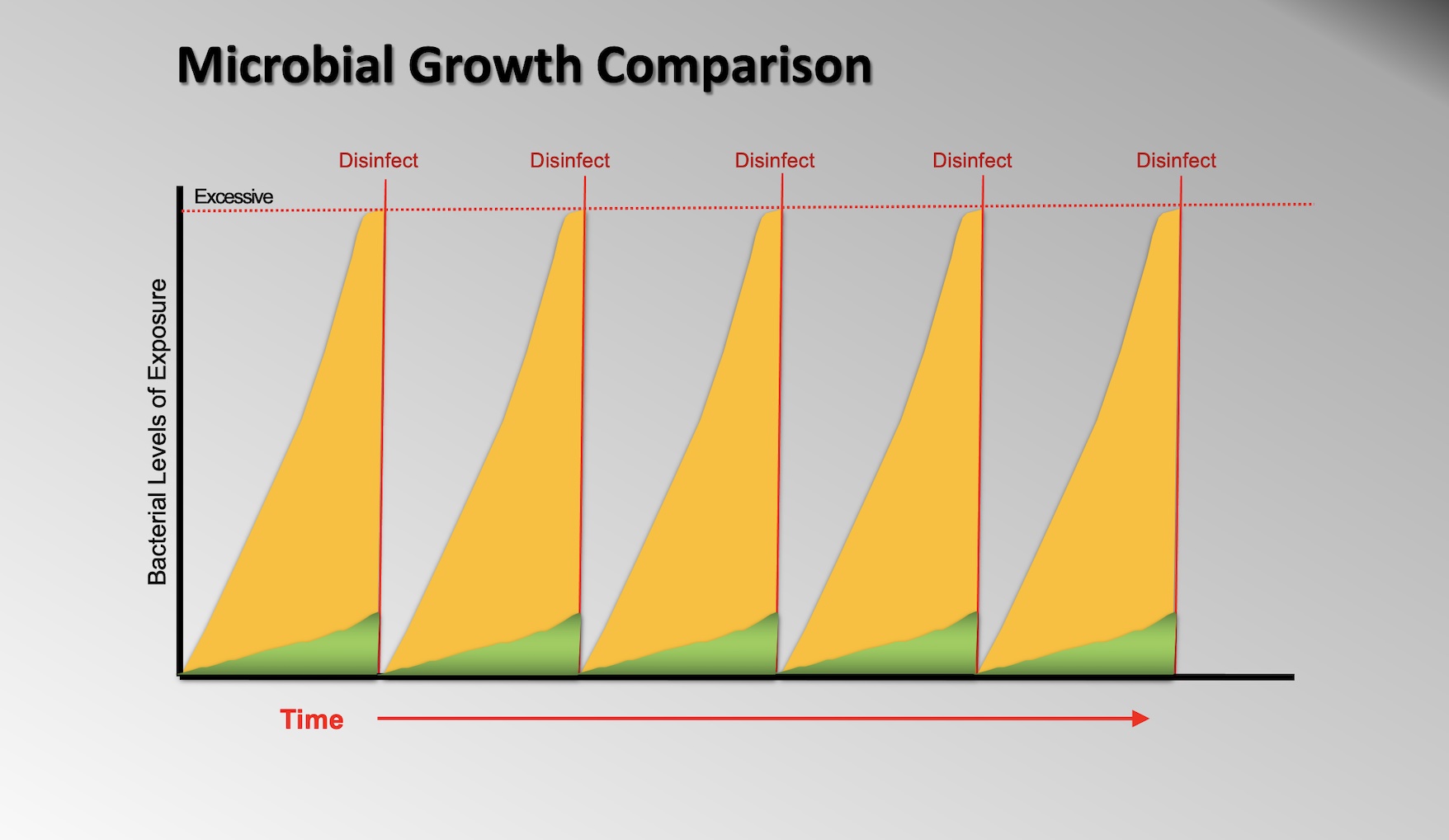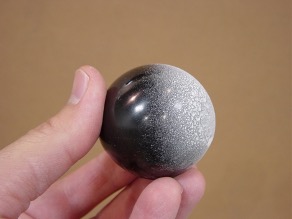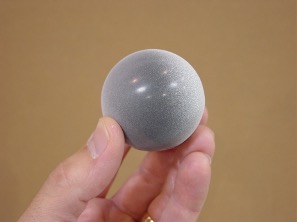It is truly incredible the rate that technology evolves. In all industries we’ve seen exponential growth in accordance with Moore’s Law, occasionally surpassing its prediction model. Once in a while there comes along a technology that changes the scope of what’s possible in its related industry. For hard-surface disinfection it’s the residual antimicrobial solution, Penetrexx.
Antimicrobials: What are They?
An antimicrobial is an agent that destroys and inhibits the growth of bacteria, viruses, microorganisms, and fungi. Within the antimicrobial family there are two classifications based upon their respective delivery methods. They are known as leaching and non-leaching antimicrobials.
Leaching – when a leaching antimicrobial is applied to a surface it will migrate and aim to be consumed by the microorganisms. It will destroy through infiltration from within the confines of the cell. One major pitfall to this delivery method is that if, by chance, the microbe absorbs less than the lethal dose it may adapt and become resistant!
Non-Leaching — This when the antimicrobial agent actively seeks to bond to the surface or product. It has a much more effective way of killing the cell through a mechanism called lysis. This is where, instead of being consumed, they penetrate the cell wall thus destroying it completely. The best part is the microbe’s ability to adapt and mutate will be drastically inhibited. It’s far less likely to encounter mutations using this style of antimicrobial.
Determining Efficacy
When it comes to determining efficacy of antimicrobials they are run through a number of tests. Two of the most important tests to take note of are the disk-diffusion test and the use-dilution test.
Disk-Diffusion: this method involves applying the antimicrobial to a sterile filter paper disk which is then placed on an agar plate housing the target bacterium. The chemicals diffuse out of the disk onto the plate full of bacteria. Scientists will then measure the diameter of the circle that surrounds the paper disks. This zone is known as the “zone of inhibition.”
Use-Dilution: this test is primarily used to determine the agent’s effect on inanimate surfaces. This test begins by dipping a stainless-steel cylinder into a culture of microbes. Once it has dried, the cylinder is dipped into the antimicrobial solution at various concentrations for a specific amount of time. After this process has finished and the cylinder has dried it will make one more trip and be transferred into a new tube. This tube contains a sterile medium in which the bacteria will be observed to have survived or died during the disinfection process.
So, What is Penetrexx?
Penetrexx is a highly effective, environmentally friendly, residual antimicrobial technology that is designed to form a permanent bond on virtually any surface. This puts it under the category of non-leaching. When applied, it creates an antimicrobial layer that inhibits the growth of odor producing organisms, viruses, and other microorganisms. This layer is bound to the surface and creates a bed of “molecular swords” (Fig. 1).

Contrary to disinfectants that achieve increased logarithmic kill rates with extended dwell times, residual antimicrobials, specifically bound technologies like Penetrexx, work on a constant basis. If you were to just use standard disinfectants with decent log-kill rates, you’ll reduce the amount of living bacteria on a given surface. But how long does that last? When do you have to disinfect and clean again? How many times per day? Per hour? What a headache.
Microbial growth takes place between disinfections. If you apply a residual antimicrobial like Penetrexx you will decrease the amount of living organisms on high touch surfaces long-term which will make your general disinfection efforts more effective (Fig. 2).
When applying Penetrexx, the preferred method is using an electrostatic sprayer to ensure 360-degree coverage of the area you’re looking to protect. Using an electrostatic sprayer will negatively charge the solution. The solution will bond with the surface entirely allowing the molecular swords in the solution to engulf the high-risk surface or object. Due to the negative charge, positively charged pathogens and microbes will be attracted to the swords in the negative solution. The swords will puncture the microbes and pathogens.
The best part is that the swords aren’t finished. They will remain there from the initial spray ensuring long-term protection. After the application process, future microbes will be inhibited from growing and spreading due to the constant presence of the swords. As you go about your cleaning, you’ll wipe the ‘carcasses’ of bacteria off of the surface while the swords remain in place and ready for another battle.
For example, think of it as if someone put a plastic sheet over an extremely expensive couch. The plastic sheet representing Penetrexx. Over the course of time many things will gather on the sheet such as crumbs, pocket change, what have you. This is symbolic of how the bond of swords on the surface attract pathogens and bacteria. At the time of our choosing, we can simply wipe the nonsense off of the plastic sheet and wait for another round of junk to gather. The important thing is that the expensive couch remains protected by the plastic sheet, protecting our sacred investment.
Residual Antimicrobial Application
Before using any antimicrobial or strong disinfectant, you need to make sure your target surface is clean. If you apply disinfectants to dirty surfaces, they will not be nearly as effective. Using an electrostatic sprayer is the preferred method of deploying Penetrexx, primarily because of the 360-degree coverage it achieves (Fig. 3). As always, make sure to be wearing personal protective equipment before beginning the application.

W/o Electrostatics 
W/ Electrostatics
Contributing to Healthier Living Environments for All
The proof is in the pudding.
There have been numerous studies looking at the residual antimicrobial power of Penetrexx. The University of Georgia did a study of how the antimicrobial can be used in the prevention of listeria monocytogenes biofilm creation. The University conducted the use-dilution test 3 times and noted a lowering of listeria by a log10 reduction factor (Fig. 4). In this experimental study it is important to note that the trial used extremely high numbers of Listeria to challenge the solution. In the real world there would be far less Listeria cells traveling on fomites and being transmitted to the surface.
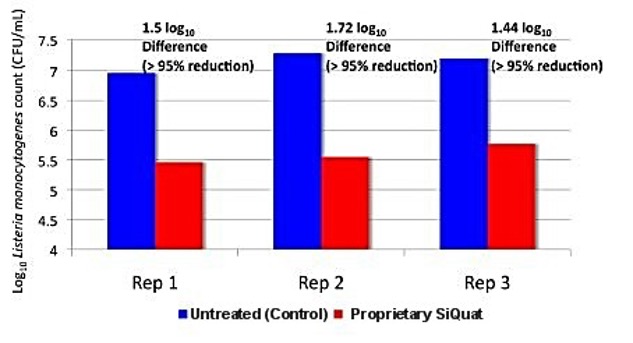
A second study was conducted at a Medical Office Suite in Florida over six consecutive weeks. Forty data points were selected with 20 being treated with Penetrexx (test) and 20 untreated (control). ATP testing was done on all points in the evening and then again, the following morning. On average, the treated surface saw an overnight bio load reduction of 300% while the control group increased their bio load by 50% (Fig. 5).
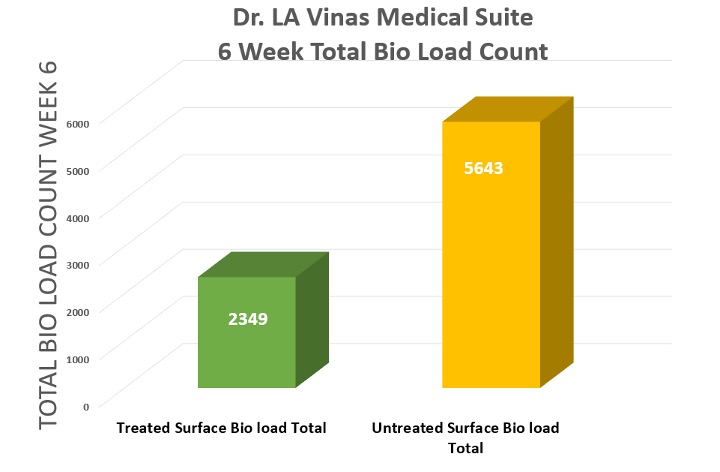
There are additional studies that showcase the true power of Penetrexx within the medical industry as well as commercial business space. The one thing that remains consistent throughout the varying tests and environments is the power Penetrexx has when it comes to stopping microbial growth.
Impact on Animal Health
Its contribution to the animal health industry cannot go unnoticed. Disinfection and sanitization are cornerstones for healthier livestock and poultry populations, the same as us. What has been missing in this industry’s infection prevention protocols is the addition of proven, safe, non-toxic, environmentally responsible technology that offers long term protection to these critical environments.
In one study done by the University of Georgia, 2 test houses and 2 control houses of chickens were included in the trial. The test houses were electrostatically sprayed with the antimicrobial. Within the test houses they discovered an overall bacterium decrease on ceilings (100%), wood (99.8%), plastic (86.7%), and metal (100%). The overall airborne counts decreased due to the decreased surface counts.
The presence of the residual antimicrobial lead to incredibly impacts across the board. Such as, the number of chickens available for sale increased by 137 birds per house, mortality decreased by .06%, each treated house sold more weight per house, and the average weight per bird increased.
In the dairy industry there was a calf hutch (Fig. 6) study conducted with Purina Animal Nutrition. A calf hutch is an individual pen with a shelter and outdoor area. The study included 100 cow hutches (50 control/50 test). The test hutches were only treated once with the antimicrobial agent at the start of the trial. The control hutches were cleaned and prepared with existing protocols. Within calf hutches, bioaccumulation is significant. Open-air, humidity, feces, urine, dust, etc. all being contributors.
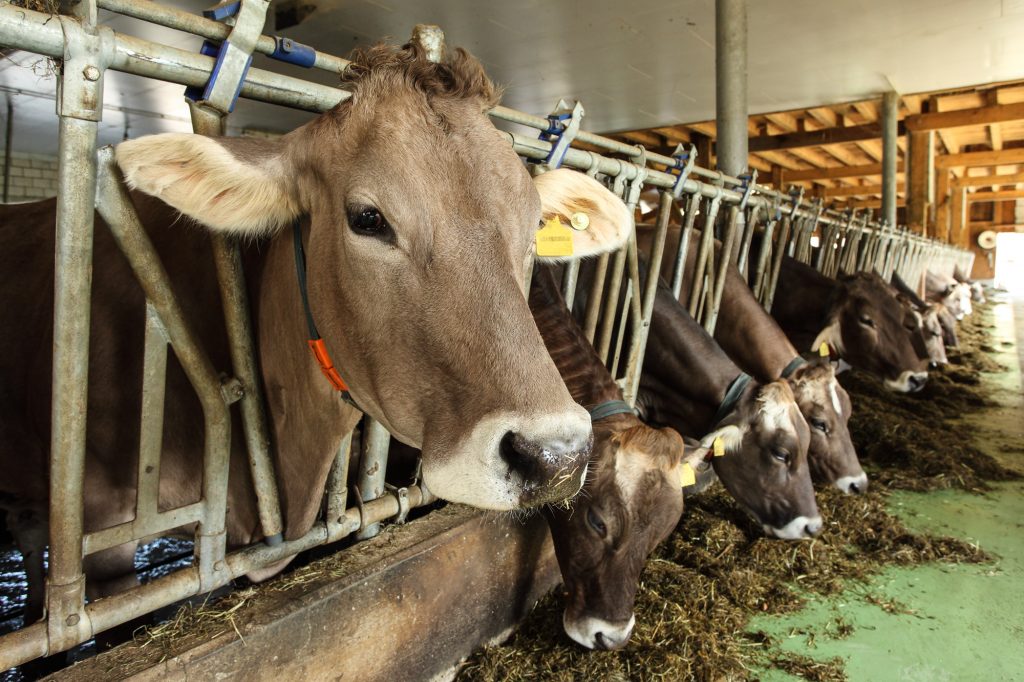
What this study was able to conclude is that in the test hutches, calves were exposed to 92% less bio burden in the second week. In weeks 3 and 8, the test hutches were exposed to 82-84% less bio burden over the control hutches. After 82 days, the test hutches were exposed to 51% less bio burden than the control. The test hutch calves gained an average of 3.28-5.74 pounds greater than the average weight gained by the control group (Fig. 7).
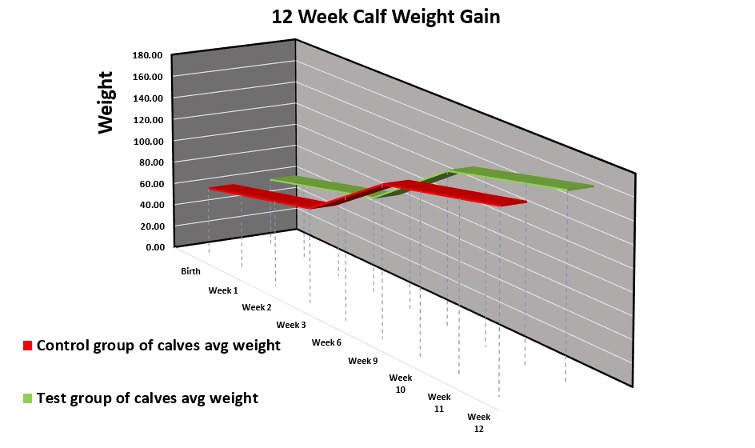
Worry-Free Protection
It is clear that the use of this residual antimicrobial technology will help reduce the spread of infectious disease no matter the setting. If you put a premium on your reputation for protecting your employees, patients, animals, etc. you’ll want to contact us and find out where this modern-era antimicrobial will fit into your infection prevention plan.
Safety Net can provide the solution and or bring service your environment. Offering comprehensive infection control & prevention solutions is our goal. Compounding years of experience with attention to detail is why hospitals and healthcare facilities choose Safety Net for all their disinfection needs. Applying solutions like Penetrexx is what separates Safety Net from the rest, guaranteeing you worry-free protection.
About the Author
Robert Hasselfeld is SEO manager and an account manager at Safety Net.


